In any emergency situation it could very well be your emergency food and water supply that saves your life. In this article we take a detailed look at the basic food to store for emergency situations.
Fueling Your Journey: Basic Food to Store for Emergency
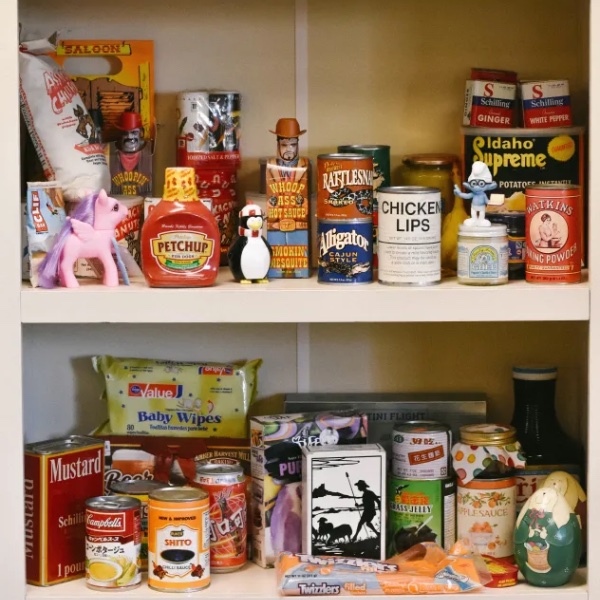
In a world where unforeseen disasters and emergencies can disrupt our daily lives, preparedness is paramount. Among the essentials needed for surviving these trying times, food takes center stage. It’s the sustenance that fuels us physically and emotionally, and having a well-thought-out plan for emergency food storage can make all the difference. Starting to gain a knowledge of basic food to store for emergency should be at the very forefront of your mind and prepper plans.
The Role of Food in Disaster Preparedness
When disaster strikes, access to fresh food may become limited or even non-existent. Whether it’s a natural disaster like a hurricane, a prolonged power outage, or unforeseen economic challenges, having a reliable stash of emergency food can be a lifesaver. It provides you with a safety net, ensuring you and your loved ones don’t go hungry during times of crisis.
In this comprehensive guide, we’ll take you on a journey through the essential aspects of emergency food storage. From understanding the types of foods to store to calculating your specific needs and maintaining freshness, we’ve got you covered. Think of this article as your roadmap to food security in uncertain times.
What to Expect in This Article
In the following sections, we’ll delve into the different categories of emergency foods, exploring non-perishable staples, canned goods, freeze-dried and dehydrated options, MREs (Meals Ready to Eat), and foods for special diets. You’ll learn how to calculate the right amount of food for your family and how to store it properly to maximize shelf life.
We’ll also discuss budget-friendly strategies for building your food supply, offer meal planning tips, and emphasize the importance of food safety and hygiene. And, of course, we’ll cover how to review and replenish your supplies to ensure you’re always prepared.
So, without further ado, let’s embark on the journey of building your emergency food supply and enhancing your readiness for whatever challenges lie ahead. Your journey to food security starts now.
Understanding the Need for Emergency Food
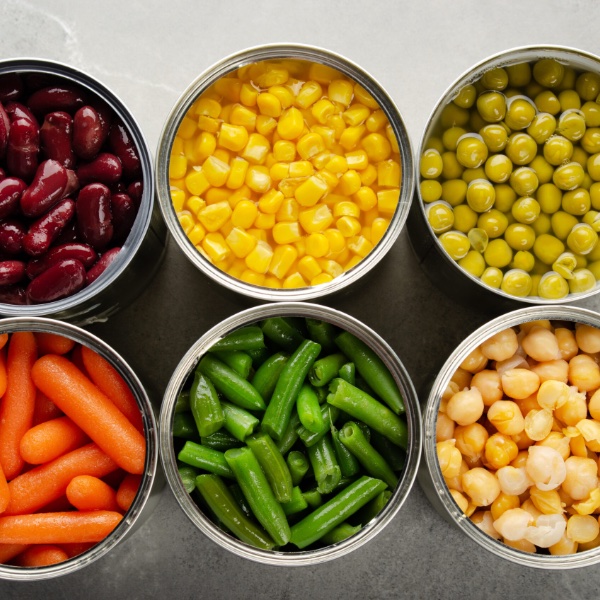
In the face of uncertainty, having a reliable emergency food supply is not merely a precaution—it’s a lifeline. Understanding the significance of this lifeline and its role in disaster preparedness is the first step toward securing your family’s well-being during times of crisis.
Explaining the Significance of Emergency Food
Food is not just sustenance; it’s a source of comfort, energy, and resilience. When disaster strikes, it can disrupt the normal flow of our lives in countless ways. Access to grocery stores may be compromised, transportation may be hindered, or power supplies might be disrupted. During these times, the food you’ve stored becomes a crucial resource.
Your emergency food supply serves as a buffer, providing you and your loved ones with sustenance when traditional sources are unreliable or unavailable. It’s a lifeline that can sustain you through the toughest of times, offering the peace of mind that your family won’t go hungry.
Types of Emergencies Where Emergency Food is Essential
Emergency food is not a contingency for a single type of crisis; it’s a versatile solution that can prove invaluable in various situations:
- Natural Disasters: Hurricanes, earthquakes, floods, and wildfires can disrupt food distribution and access for extended periods. An emergency food supply ensures you’re ready to weather these storms.
- Power Outages: Short-term power outages can lead to spoilage of refrigerated and frozen foods, while prolonged ones can make cooking impossible. Having non-perishable foods on hand is crucial.
- Economic Crises: Economic downturns or personal financial setbacks can make purchasing fresh groceries a challenge. Your food supply acts as a financial safety net, allowing you to allocate resources elsewhere.
How Long Should Your Emergency Food Supply Last?
The duration of your emergency food supply depends on several factors, including the size of your household and the nature of potential emergencies. As a general rule of thumb, aim for a supply that can sustain your family for at least three days to two weeks.
For short-term disruptions like power outages, a three-day supply might suffice. However, for more significant emergencies like natural disasters or economic crises, extending your supply to two weeks or more is advisable. This ensures you have a comfortable margin of safety during uncertain times.
In the sections that follow, we’ll delve into the specific types of emergency foods to consider and how to calculate the right amount to meet your family’s needs. Your journey to food security continues as we explore essential food categories for emergency storage.
Essential Food Categories for Emergency Storage
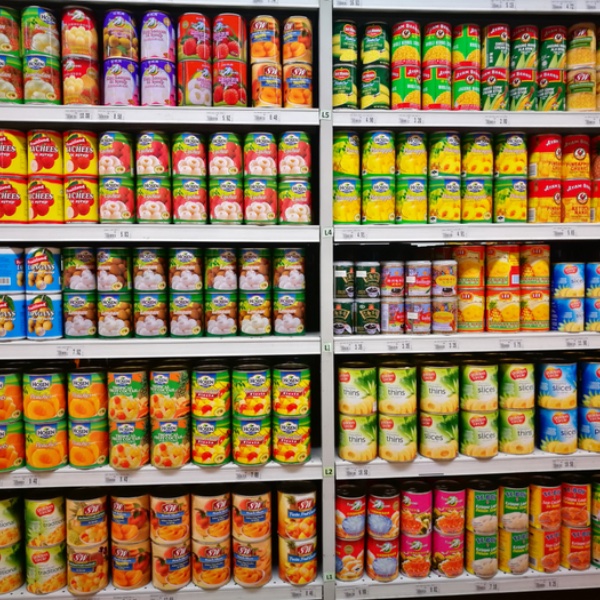
When building your emergency food supply, it’s essential to diversify your options to ensure balanced nutrition and versatility in meal preparation. The first category we’ll explore is non-perishable staples—an indispensable cornerstone of any emergency food plan.
Non-Perishable Staples
Exploring the Importance of Non-Perishable Foods
Non-perishable foods are the foundation of your emergency food supply for several compelling reasons:
- Extended Shelf Life: Non-perishables are designed to have a long shelf life, often lasting for months or even years. This makes them highly dependable when emergencies strike, as they won’t spoil quickly.
- Minimal Preparation: Many non-perishable staples require little to no cooking or special preparation. They can be consumed as is or easily incorporated into simple meals.
- Nutritional Value: Staples like rice, beans, and pasta provide essential carbohydrates, fiber, and protein. They are the building blocks for well-rounded, filling meals.
Listing Essential Non-Perishable Items
Consider stocking your emergency pantry with these essential non-perishable staples:
- Rice: Rice is a versatile and cost-effective staple that can serve as the base for numerous meals. White rice has a longer shelf life, while brown rice offers additional nutrients and fiber.
- Beans: Canned or dried beans, such as black beans, kidney beans, or lentils, are rich sources of protein and fiber. They can be used in soups, stews, and casseroles.
- Pasta: Pasta is a quick-cooking carbohydrate source that can be stored for an extended period. Varieties like spaghetti, macaroni, and penne offer meal variety.
- Canned Vegetables: Canned vegetables like corn, peas, and green beans retain their nutritional value and flavor. They add essential vitamins and minerals to your meals.
- Canned Fruits: For a touch of sweetness and vitamins, include canned fruits like peaches, pears, or pineapple. Opt for varieties in water or natural juice to minimize added sugar.
Shelf-Life Considerations for Non-Perishables
While non-perishable staples have long shelf lives, it’s vital to manage them effectively to ensure their freshness:
- Storage Conditions: Keep non-perishables in a cool, dry, and dark place. Avoid exposure to humidity, extreme temperatures, and direct sunlight.
- Check Expiration Dates: Regularly inspect the expiration dates on canned and packaged items. Use the “first in, first out” (FIFO) method to consume older items before newer ones.
- Rotate Your Stock: Periodically rotate your emergency food supply by incorporating these items into your daily meals and replacing them with fresh stock. This practice prevents food waste.
In the next section, we’ll explore another vital category of emergency foods—canned goods. These versatile items provide a wide range of options for creating nourishing meals during emergencies.
Canned Goods
Canned goods are a cornerstone of emergency food storage due to their versatility, convenience, and extended shelf life. They encompass a wide range of items, including vegetables, fruits, and meats. The key to maximizing their utility is proper rotation to maintain freshness.
- Canned Vegetables and Fruits: Canned vegetables and fruits retain essential nutrients and are ready to use in various recipes. They provide essential vitamins and minerals during emergencies.
- Canned Meats: Canned meats like tuna, chicken, and ham offer a protein source for hearty meals. They require no refrigeration, making them a valuable addition to your supply.
Freeze-Dried and Dehydrated Foods
Freeze-dried and dehydrated foods are lightweight, long-lasting, and nutritious options for emergency storage. They include items like powdered eggs, dehydrated fruits, and vegetables. To prepare them, simply add water, making them convenient for quick meals.
MREs (Meals Ready to Eat)
MREs are compact, pre-packaged meals designed for convenience and nutrition. You can purchase them from military surplus stores, outdoor retailers, or online. Typical contents include an entrée, side dish, dessert, and accessories like utensils and condiments.
Staples for Special Diets
For those with dietary restrictions, it’s essential to consider specialized emergency food options. Gluten-free, vegetarian, and other special diets can be accommodated with appropriate food choices. Make sure to stock items that align with specific dietary needs to ensure everyone’s well-being during emergencies.
Calculating Your Food Supply Needs
Building a well-rounded emergency food supply requires thoughtful planning to ensure you have enough sustenance to weather the storm. Let’s delve into the essential considerations for determining the right quantity of emergency food for your family and which food to store for emergency.
Guidelines for Determining Food Supply
- Family Size: The size of your family is a primary factor in calculating your food supply needs. Consider each member’s dietary requirements when planning. Keep in mind that children and adults may have varying calorie needs.
- Expected Duration of Need: Estimate how long you might need to rely on your emergency food supply. The duration could vary based on the type of emergency. Common recommendations include a minimum of three days’ worth of food for short-term disruptions and up to two weeks for more extended crises.
- Calorie Requirements: Determine the daily calorie requirements for each family member based on age, gender, and activity level. Use this as a basis for calculating the total number of calories needed for your food supply.
- Nutritional Needs: Ensure that your emergency food supply covers essential nutrients, including carbohydrates, protein, fiber, vitamins, and minerals. Aim for a balanced diet even in challenging circumstances.
- Special Dietary Considerations: Take into account any special dietary needs within your family, such as food allergies, vegetarian or vegan preferences, or medical conditions. Stock items that accommodate these requirements.
Factors to Consider
- Calories Per Day: On average, adults require about 2,000 to 2,500 calories per day, depending on factors like age, gender, and activity level. Children and elderly family members may have different calorie needs.
- Total Calories Needed: Multiply the daily calorie requirement by the number of days you intend to cover with your emergency food supply. For example, a family of four preparing for a two-week emergency may need 56,000 to 70,000 total calories.
- Food Diversity: While non-perishable staples provide essential nutrients, it’s essential to have a variety of foods to meet dietary needs and avoid meal fatigue. Include a mix of grains, protein sources, fruits, and vegetables.
- Age-Specific Needs: Consider the nutritional requirements of infants, children, and elderly family members. If you have infants, ensure you have an adequate supply of baby formula.
- Adjust for Individual Variations: Pregnant or nursing women, individuals with high activity levels, and those with medical conditions may require additional calories and specialized foods.
- Don’t Forget Water: Alongside food, ensure you have a sufficient supply of clean drinking water. The general recommendation is at least one gallon per person per day for drinking and sanitation.
By calculating your food supply needs based on these guidelines and considering the specific requirements of your family, you can rest assured that you’ll have the sustenance necessary to face emergencies with confidence. In the upcoming sections, we’ll explore the specific types of emergency foods to include in your supply, ensuring you meet these nutritional needs effectively.
Proper Storage and Rotation
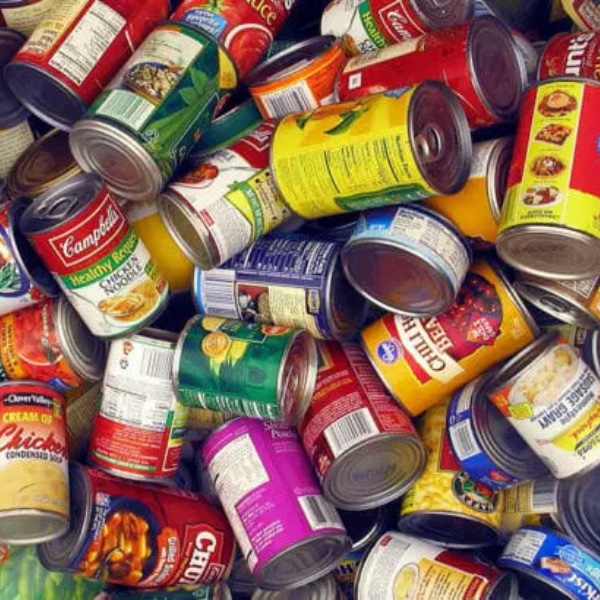
Ensuring the longevity and safety of your emergency food supply depends on proper storage and rotation practices. In this section, we’ll cover the essential aspects of storing your emergency food effectively.
Storing Your Emergency Food
Tips on Selecting a Suitable Storage Location
- Cool and Dry: Choose a storage location that maintains a consistent temperature and is free from extreme heat or cold. Basements, pantries, and even dedicated storage closets can be ideal options.
- Dark and Dry: Avoid exposure to direct sunlight or excessive humidity, as these conditions can accelerate the degradation of food quality and shelf life.
- Ventilation: Ensure proper ventilation to prevent moisture buildup. Consider using shelving units to keep food items off the ground, especially in basements.
Containers and Packaging Options
- Airtight Containers: For loose items like rice, beans, or flour, use airtight containers or food-grade buckets with tight-sealing lids to prevent exposure to air and pests.
- Vacuum Sealing: Vacuum-sealing food items can significantly extend their shelf life by removing air and preventing spoilage.
- Original Packaging: For commercially packaged foods like canned goods, leave them in their original packaging unless damaged. These packages are designed for long-term storage.
Maintaining a Cool and Dry Environment
- Temperature Control: Keep the storage area at a consistent temperature. Ideally, aim for temperatures between 50°F and 70°F (10°C to 21°C).
- Humidity Control: Use moisture-absorbing products like silica gel packets to reduce humidity levels inside storage containers.
- Pest Prevention: Regularly inspect your storage area for signs of pests like insects or rodents. Use traps and repellents as needed to keep your food supply safe.
Rotation Practices
- First-In, First-Out (FIFO): Implement a FIFO system to ensure that older items are used before newer ones. Label items with purchase or expiration dates for easy tracking.
- Regular Inspections: Periodically inspect your emergency food supply for signs of damage, spoilage, or pests. Replace any compromised items promptly.
- Consumption Integration: Incorporate non-perishable items from your emergency food supply into your daily meals. This practice ensures that your supply remains fresh and familiarizes your family with these foods.
Proper storage and rotation are vital for maintaining the quality and safety of your emergency food supply. By adhering to these practices, you can rest assured that your food will be ready when you need it most. In the next sections, we’ll explore various food categories suitable for emergency storage and how to make the most of your preparedness efforts.
Food Rotation
Explaining the “First In, First Out” (FIFO) Method
The “First In, First Out” (FIFO) method is a fundamental practice in managing your emergency food supply. Here’s how it works:
- Prioritize Older Items: When you receive or purchase new food items for your emergency stockpile, always place them behind or beneath the existing ones.
- Use the Oldest First: When it’s time to prepare a meal from your emergency food supply, reach for the oldest items first. This ensures that items with shorter shelf lives are consumed before newer ones.
Setting Up a Rotation Schedule
To prevent food waste and maintain the freshness of your supplies, consider implementing a rotation schedule:
- Regular Check-Ins: Schedule routine check-ins with your emergency food supply. This could be monthly, quarterly, or semi-annually, depending on your preferences.
- Review and Replace: During these check-ins, review the items in your storage. Identify any products that are approaching their expiration dates or that show signs of damage.
- Consume and Replace: Use the items that are nearing their expiration dates in your everyday meals. Replace them with fresh stock to maintain a consistent supply.
Checking for Signs of Spoilage or Expiration
As you conduct your rotation and inspections, keep an eye out for the following indicators of spoilage or expiration:
- Damaged Packaging: If you notice any tears, punctures, or bulging cans, discard the affected items immediately, as they may be compromised.
- Unusual Odors: If you detect foul or rancid odors when opening a container, it’s a sign that the food has gone bad and should not be consumed.
- Changes in Texture or Color: Inspect the appearance and texture of the food. Any significant changes, such as discoloration, mold growth, or unusual textures, indicate spoilage.
- Expired Dates: Always check expiration dates on canned and packaged items. While some foods may still be safe to consume beyond their dates, it’s best to adhere to these guidelines during emergencies.
By regularly practicing the FIFO method, establishing a rotation schedule, and remaining vigilant for signs of spoilage or expiration, you can ensure that your emergency food supply remains safe and reliable. The next sections of this guide will continue to provide insights into various aspects of emergency food preparedness, helping you build a well-rounded plan to meet your family’s needs in times of crisis.
Budget-Friendly Strategies
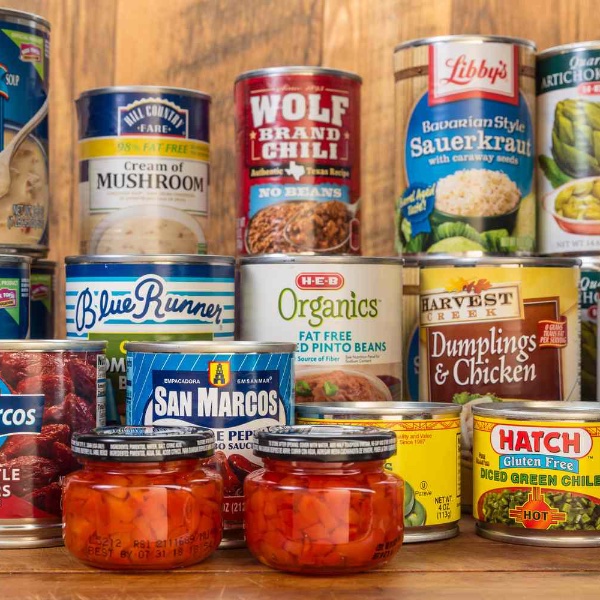
Building an emergency food supply doesn’t have to break the bank. In fact, there are several cost-effective strategies to help you stock up on essential items without straining your budget. You will be amazed how many options of food to store for emergency are cheaper than you may think.
Offering Cost-Effective Ways to Build an Emergency Food Supply
- Sales and Discounts: Keep an eye on sales, discounts, and promotions at your local grocery stores and online retailers. Buying non-perishable items when they’re on sale can significantly reduce your overall costs.
- Bulk Purchases: Consider purchasing items in bulk, especially those with a longer shelf life. Many stores offer bulk bins where you can scoop out the quantity you need, reducing packaging costs.
- Generic Brands: Generic or store-brand products are often more affordable than name brands, and they’re typically of comparable quality. Opt for generic options when available.
Mentioning Sales, Discounts, and Bulk Purchases
- Sales and Promotions: Take advantage of seasonal sales and promotions, especially during back-to-school, holiday, or clearance events. Retailers often offer discounts on canned goods, pasta, and other staples.
- Couponing: Explore coupon websites and apps for digital coupons and discounts on non-perishable items. Couponing can significantly reduce your grocery bill.
- Membership Stores: Consider joining a membership store like Costco or Sam’s Club, where you can purchase emergency food supplies in bulk at competitive prices.
DIY Food Preservation Techniques
- Canning: Learn the art of canning, which allows you to preserve fruits, vegetables, and even meats for long-term storage. Invest in canning equipment and follow safe canning practices.
- Dehydration: A food dehydrator can transform fresh fruits and vegetables into long-lasting snacks. Dehydrated foods are lightweight and require minimal storage space.
- Freezing: If you have access to a freezer, you can extend the shelf life of many foods by freezing them. Invest in vacuum-sealing equipment to prevent freezer burn.
By being savvy with your purchases, taking advantage of discounts, and exploring do-it-yourself food preservation techniques, you can gradually build a budget-friendly emergency food supply that provides both security and peace of mind. As we continue through this guide on which food to store for emergency, we’ll delve into more strategies and tips to help you prepare effectively for uncertain times.
Meal Planning and Preparation
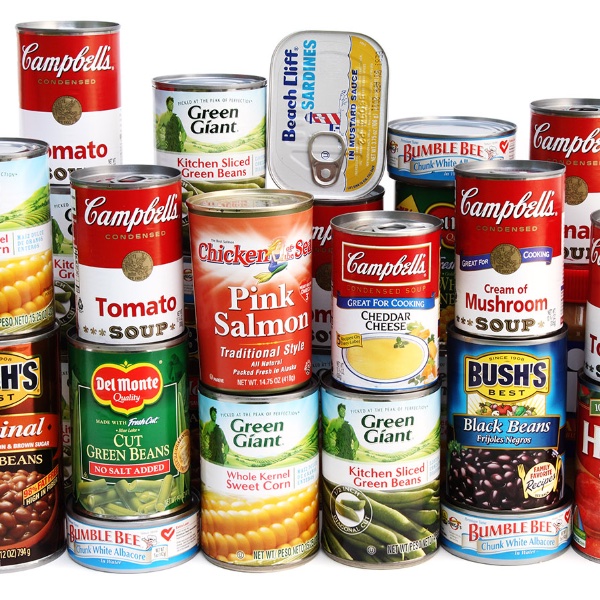
It is one thing knowing the best food to store for emergency. It is another making that food a little more appealing especially if you have young children. Effective meal planning and preparation are integral to making the most of your emergency food supply. In this section, we’ll explore tips for creating practical emergency meal plans, offer simple recipes using stored foods, and emphasize the importance of cooking and meal variety.
Tips for Creating Emergency Meal Plans
- Inventory Assessment: Begin by taking stock of your emergency food supply. Understand what items you have available, their quantities, and their nutritional content.
- Balanced Nutrition: Aim for balanced meals that provide essential nutrients. Incorporate carbohydrates, protein sources, fruits, vegetables, and fats into your meal plans.
- Portion Control: Carefully portion out food items to ensure that your supply lasts as long as needed. Avoid overeating or wasting food.
Suggesting Simple Recipes Using Stored Foods
- Rice and Beans: Combine rice and canned beans for a hearty and nutritious meal. Add canned vegetables for extra flavor and nutrients.
- Pasta Primavera: Cook pasta and mix it with canned vegetables and a simple olive oil and herb dressing for a quick and tasty dish.
- Canned Soup Base: Use canned soups as a base and add canned meats, rice, pasta, or beans to create a filling soup or stew.
- Trail Mix: Combine dried fruits, nuts, and granola for a nutritious and energy-boosting snack.
Emphasizing the Importance of Cooking and Meal Variety
- Cooking Skills: Familiarize yourself and your family with basic cooking techniques, even if you rely on non-perishable items. Knowing how to prepare meals from your emergency food supply is essential.
- Meal Variety: Rotate through different meal options to maintain variety and prevent meal fatigue. Variety can boost morale during challenging times.
- Comfort Foods: Don’t forget comfort foods. Including a few treats or familiar items can provide emotional comfort during emergencies.
- Water Management: Consider how much water is needed for cooking and hygiene, and plan accordingly to ensure you have enough.
Effective meal planning and preparation can help you make the most of your emergency food supply, ensuring that you and your family enjoy balanced, satisfying meals during challenging times. In the upcoming sections, we’ll delve into food safety, review, and replenishment practices to maintain your emergency food supply for the long term. It is not just knowing which food to store for emergency. It is equally as important learning how to store it safely.
Food Safety and Hygiene
During emergencies, maintaining proper food safety and hygiene practices becomes paramount to safeguarding your health and the health of your family. In this section, we’ll explore guidelines for ensuring food safety during crises, managing sanitation and hygiene without utilities, and avoiding foodborne illnesses.
Guidelines for Ensuring Food Safety During Emergencies
- Hand Hygiene: Frequent handwashing with soap and clean water is crucial. If water is limited, use hand sanitizers with at least 60% alcohol.
- Safe Water Sources: Ensure that the water you use for cooking, cleaning, and drinking is safe. If tap water is compromised, rely on stored bottled water or purify water from natural sources.
- Cook Thoroughly: Cooking foods at recommended temperatures kills harmful bacteria and pathogens. Use a food thermometer to check the internal temperature of cooked foods.
Managing Sanitation and Hygiene Without Utilities
- Portable Toilets: In the event of water and sewage system disruptions, consider having portable toilets and sanitation supplies on hand.
- Trash Disposal: Establish a designated area for disposing of food packaging, waste, and sanitary items. Seal trash bags tightly to prevent odors and pests.
- Handwashing Stations: Set up handwashing stations with water containers, soap, and towels. Teach family members proper handwashing techniques.
Avoiding Foodborne Illnesses
- Food Storage: Maintain proper food storage to prevent spoilage and contamination. Keep raw and cooked foods separate and stored at appropriate temperatures.
- Hygienic Food Preparation: Practice safe food handling, including washing and peeling fruits and vegetables, and using clean utensils and cutting boards.
- Labeling and Dating: Label foods with their purchase or preparation dates and use the FIFO method to ensure older items are used first.
- Regular Inspections: Continuously inspect your emergency food supply for signs of spoilage, pest infestation, or damaged packaging.
By adhering to these guidelines and maintaining strict food safety and hygiene practices, you can minimize the risk of foodborne illnesses and ensure that your emergency food supply remains a reliable source of nourishment during times of crisis. In the following section of food to store for emergency, we’ll discuss how to review and replenish your supplies to keep your emergency food stockpile up to date and ready for use.
Review and Replenishment
Building an emergency food supply is not a one-time endeavor; it requires ongoing attention and maintenance. In this section, we’ll emphasize the importance of periodically reviewing and replenishing your emergency food supplies to ensure they remain effective.
- Stay Prepared: Unforeseen emergencies can happen at any time. By regularly reviewing your emergency food supply, you ensure that it’s ready to meet your needs when you need it most.
- Inventory Check-Ins: Schedule regular check-ins with your supply, such as every three to six months, to assess its condition and contents.
- Rotate and Use Items: Rotate through the items in your supply by incorporating them into your daily meals and replacing them with fresh stock. This practice prevents food waste and ensures the items in your supply remain within their shelf life.
Scheduling Check-Ins and Making Necessary Adjustments
- Set Reminders: Use calendar reminders or an established schedule to prompt you to review your emergency food supply regularly.
- Adjust for Changing Needs: As your family’s size or dietary needs change, adjust your supply accordingly. Ensure you have adequate supplies for infants, children, and elderly family members.
- Consider Seasonal Changes: Take into account seasonal variations and specific weather-related risks in your region. For example, in hurricane-prone areas, ensure your supply is robust during hurricane season.
- Replace Expired Items: Discard and replace any items that have reached their expiration dates or show signs of spoilage or damage.
By proactively reviewing and replenishing your emergency food supplies, you can maintain their effectiveness and readiness. It’s a small yet critical investment in your family’s safety and well-being. In the concluding section, we’ll recap the key takeaways from this guide and reinforce the importance of preparedness in uncertain times.
Food to Store for Emergency Conclusion
In times of uncertainty, having a well-prepared emergency food supply is not just prudent; it’s a lifeline. This guide has provided you with the knowledge and tools to build and maintain your food security in the face of disasters and crises.
Food to Store for Emergency Key Takeaways:
- Importance of Preparedness: Emergencies can strike without warning. Preparing with an emergency food supply is vital for your family’s well-being.
- Diverse Food Categories: Stock a variety of non-perishables, canned goods, and more to ensure balanced nutrition and meal variety.
- Calculating Needs: Calculate food needs based on family size, duration of need, and nutritional requirements.
- Storage and Rotation: Store food properly, practice the FIFO method, and maintain a cool, dry environment.
- Budget-Friendly Strategies: Save money with sales, bulk purchases, and DIY food preservation.
- Meal Planning: Plan meals, create simple recipes, and prioritize cooking skills.
- Food Safety and Hygiene: Follow guidelines to prevent foodborne illnesses and manage sanitation.
- Regular Review: Periodically review and replenish your supplies to keep them up to date.
Remember, your journey to food security starts today. Take action, build your food to store for emergency, and be ready for whatever challenges lie ahead. Your family’s safety and well-being are worth the effort.
Take a look at more emergency food and water articles here.
